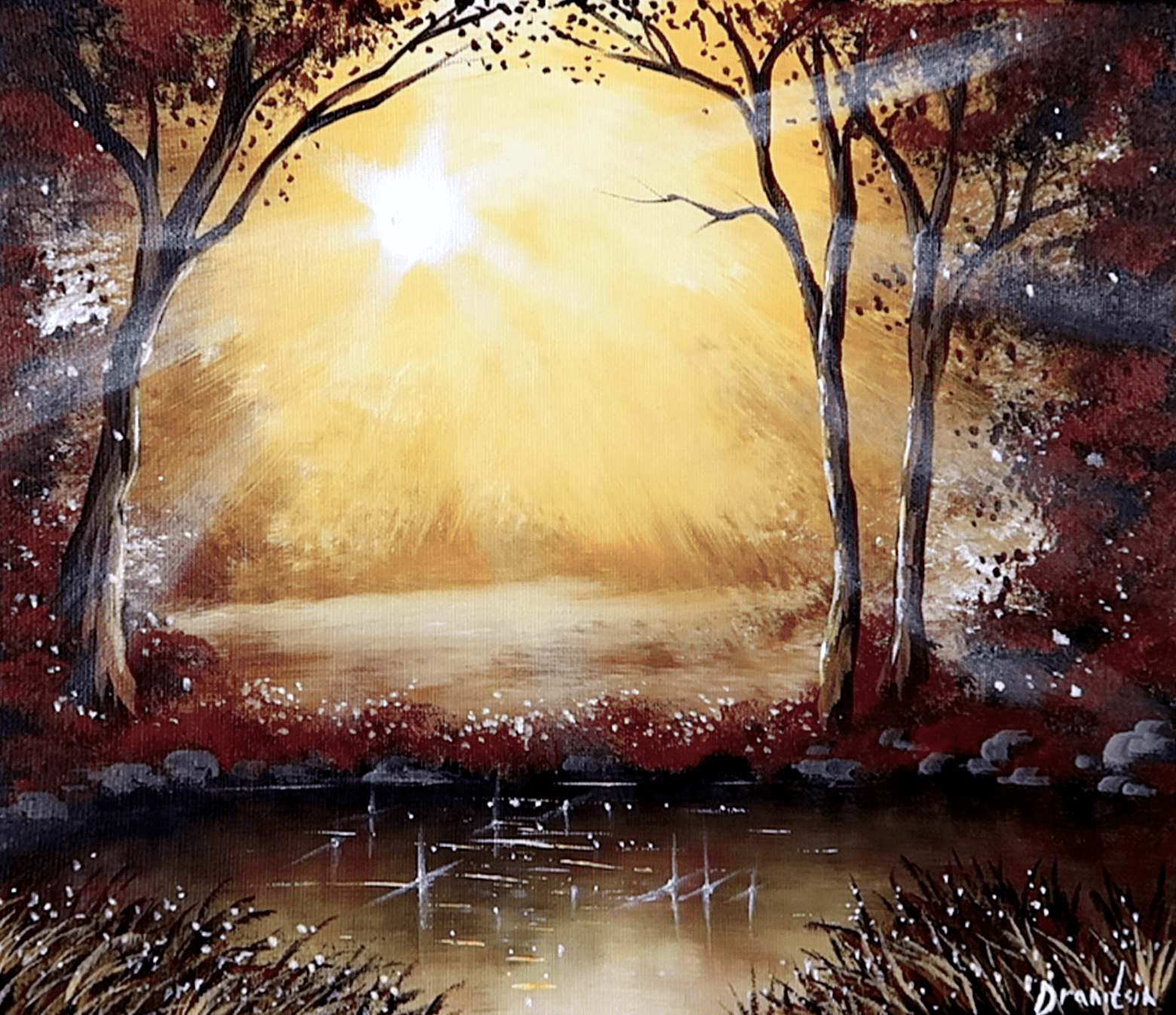10 essential painting techniques for artists
If you’re aiming to enhance your painting skills, gaining proficiency in fundamental painting techniques is essential. Whether you prefer oil, acrylic, or watercolor, understanding these techniques can empower you to experiment with diverse styles and find your unique artistic voice. Acquiring knowledge of these techniques not only improves your own practice but also enables you to interpret and appreciate art by understanding the methods artists employ to achieve specific effects. This guide compiles 10 essential painting techniques designed to aid your development as an artist. These techniques, including blending, wet-on-wet, dry brush, glazing, sgraffito, impasto, glaze and scumble, negative painting, masking, and layering, offer a versatile set of skills that cater to different artistic expressions. Whether you’re a beginner or an experienced artist, incorporating these techniques into your repertoire will contribute to your growth and confidence in painting.
Getting started
Improving your painting skills involves embracing experimentation with various styles and techniques while breaking free from conventional rules. Theo Carnegy-Tan, an Arts Academic and UAL short course tutor, emphasizes the historical trend of painters advancing their techniques by challenging established norms. This rebellion against expectations can manifest in techniques like extreme impasto or energetic, gestural strokes, as seen in the work of Expressionists and Impressionists in the early 20th century. For those overwhelmed by the myriad possibilities, Theo suggests a liberating perspective—there’s no obligation to adhere to conventional techniques. He cites the example of John Baldessari, who famously hired someone to create a painting entirely composed of text phrases from practical textbooks. Such unconventional approaches have historically shattered boundaries, allowing artists to explore new realms beyond form, gesture, and color, especially in the post-war period. The key takeaway is the freedom to forge a personal and innovative artistic path, unencumbered by traditional constraints.
1# Underpainting

The term ‘underpainting’ denotes the initial layer of paint applied to a canvas or board, serving as the foundation for subsequent layers in a painting. This foundational coating plays a crucial role in creating contrast and establishing tone within the artwork. The technique is straightforward yet yields a significant impact on the overall atmosphere of the painting. Artists leverage underpainting to enhance areas that might otherwise appear flat and uniform, such as expanses of sky or sea. The manipulation of the underpainting’s tone allows artists to emphasize specific colors, drawing attention to elements like light and shadow. This technique, while seemingly simple, holds the power to subtly shape the visual dynamics and evoke a nuanced, engaging quality in the final composition.
2# Dry brushing
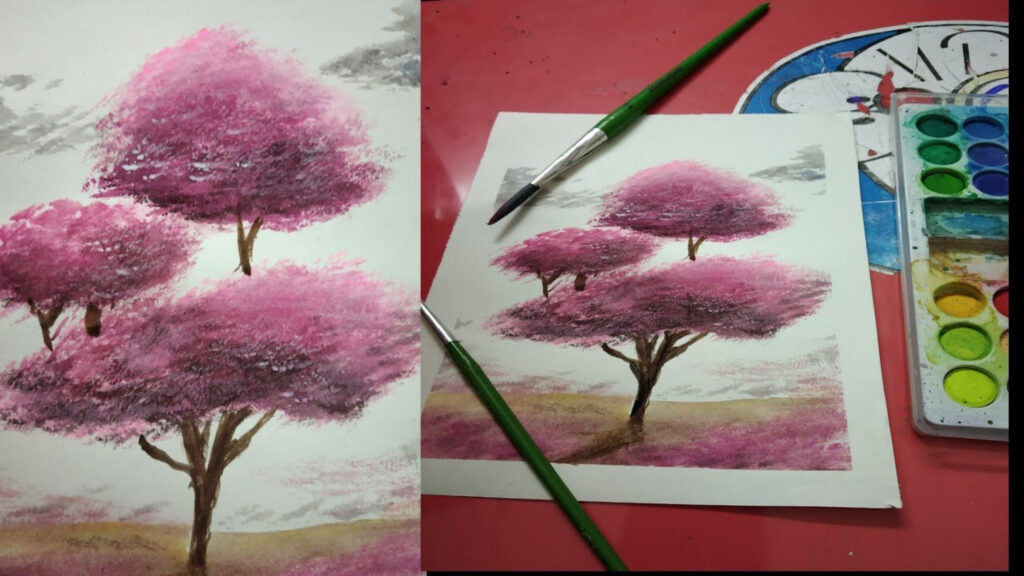
Dry brushing is a technique employed by artists where a paintbrush, although mostly dry to the touch, still retains a small amount of paint. This method produces distinctive brushstrokes with a textured, scratchy finish that can be challenging to achieve with a wet brush or when working with a significant amount of paint. The appeal of dry brushing lies in its ability to create nuanced textures, making it particularly effective in capturing the intricate details found in the natural world, ranging from the wisps of clouds to the delicate features of trees and hedgerows.
This technique finds historical precedence in ancient Chinese art, where it was used to create intricate and atmospheric effects. In this approach, a brush would be lightly dipped into black or colored ink, allowing for a softer and lighter application of paint. The resulting artworks exhibited a delicate mastery of the dry brushing technique, showcasing the artist’s skill in capturing subtle nuances and evoking a sense of depth and atmosphere within their creations.
3# Sgraffito
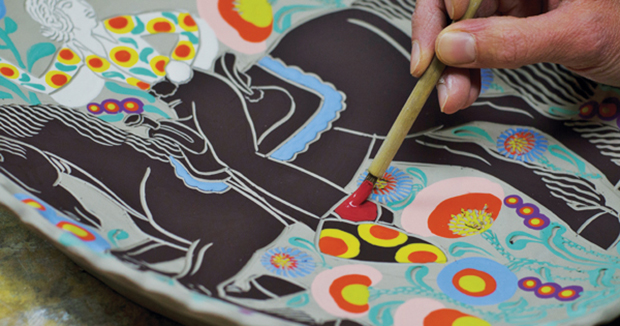
The term ‘sgraffito,’ derived from the Italian word for ‘scratched,’ denotes a painting technique wherein artists scratch through a layer of paint to reveal the underlying surface. This method involves covering an initial surface with another layer of paint and subsequently scratching off parts of the top layer, exposing distinctive patterns or shapes underneath.
Various objects can be employed for scratching lines into the paint, providing artists with a range of mark-making possibilities. Common tools for sgraffito include the pointed end of a paintbrush, pieces of card, palette knives, combs, or forks. This technique offers a versatile and creative approach, allowing artists to experiment with different tools to achieve unique textures and intricate designs in their artworks. Sgraffito adds an element of depth and visual interest to the final piece, showcasing the artist’s ability to manipulate layers and reveal hidden details through this tactile and expressive process.
4# Glazing
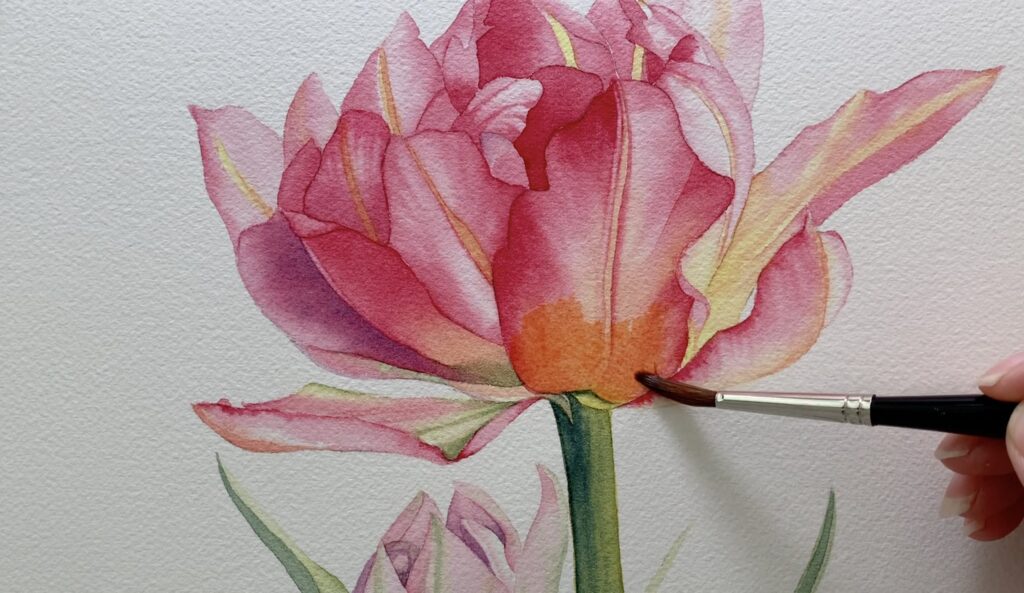
Glazing is a painting technique employed to enhance the luminosity of a work by applying a thin, transparent, or semi-transparent layer of paint onto an existing painting. This intricate process often involves the use of a wide, soft-bristled brush to achieve a subtle and nuanced effect. The artist has the flexibility to adjust the tone of the glaze by varying the amount of pigment used, and the option to build up multiple layers of glaze for a deeper, more pronounced effect. When executed skillfully, glazing serves to harmonize the contrast between colors, establishing a delicate balance between color and tone.
This technique has a rich historical tradition, notably employed during the Renaissance by many artists as a means of mixing paints. During this period, artists would apply a thin layer of paint over the base color, subtly altering the hue beneath and creating a spectrum of soft and saturated tones. The careful application of glazes allowed painters to achieve depth, luminosity, and a heightened level of visual complexity in their artworks. Today, artists continue to employ glazing as a versatile and sophisticated method to imbue their paintings with a sense of depth, richness, and a luminous quality.
5# Gestural
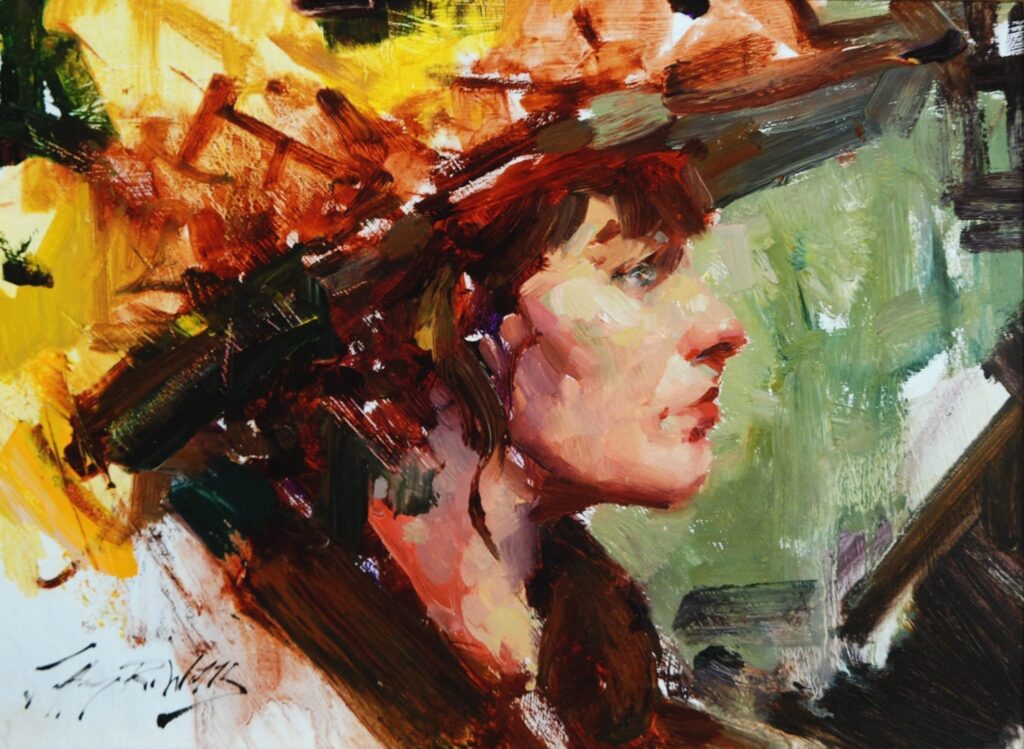
Gestural painting is a technique characterized by the application of paint through free, sweeping gestures. Artists who adopt this approach work intuitively, emphasizing the physical act of painting as a means of self-expression. The spontaneity and unrestrained nature of gestural painting allow artists to convey their emotions or state of mind through the dynamic movement of the brush or other tools.
This technique often reveals a direct connection between the artist’s inner thoughts and the expressive qualities of the artwork, creating a visual language that transcends traditional representational forms. Prominent figures associated with gestural painting include abstract expressionist artists like Willem de Kooning, Jackson Pollock, and Robert Motherwell. These artists embraced the energy and immediacy of gestural painting, contributing to the development of abstract expressionism as a significant movement in the mid-20th century art scene. The resulting artworks capture the essence of the artist’s creative process, inviting viewers to interpret and connect with the emotional depth embedded in the spontaneous brushstrokes and expressive gestures.
6# Stippling
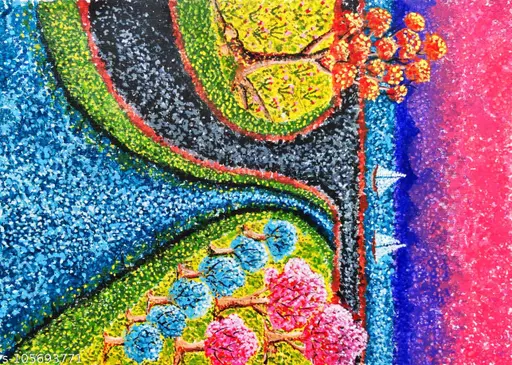
Stippling is a captivating technique for artists who relish the creation of intricate patterns and detailed paintings. In stippling, small circles or dots are employed to form an image. These dots, made with pigment of a single color, are applied using a pen or brush. The arrangement of dots is crucial, suggesting forms, shapes, and areas of contrast that can be interpreted in various ways. Stippling offers a unique and meticulous approach to image creation, allowing artists to craft intricate and visually engaging compositions through the deliberate placement of countless individual dots. This technique not only demands patience and precision but also provides artists with a versatile tool to explore texture, depth, and visual complexity in their artworks.
7# Pouring
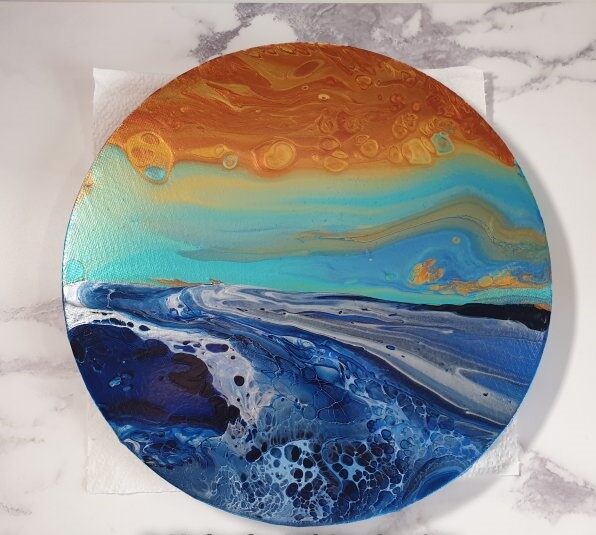
Pouring is a straightforward yet impactful painting technique, particularly well-suited for acrylic paint. Unlike traditional methods involving brushes or sponges, pouring involves directly applying paint onto a surface and tilting the canvas at various angles to activate and manipulate the paint. The fluidity of this process facilitates the natural blending of colors, resulting in vibrant and distinctive artworks that showcase the dynamic interactions between different hues. This technique allows artists to embrace the spontaneous and unpredictable nature of the paint, fostering the creation of visually engaging compositions that capture the fluidity and harmony of color relationships. Pouring offers a unique avenue for artistic expression, where the controlled chaos of the technique can lead to striking and individualistic pieces.
8# Splattering
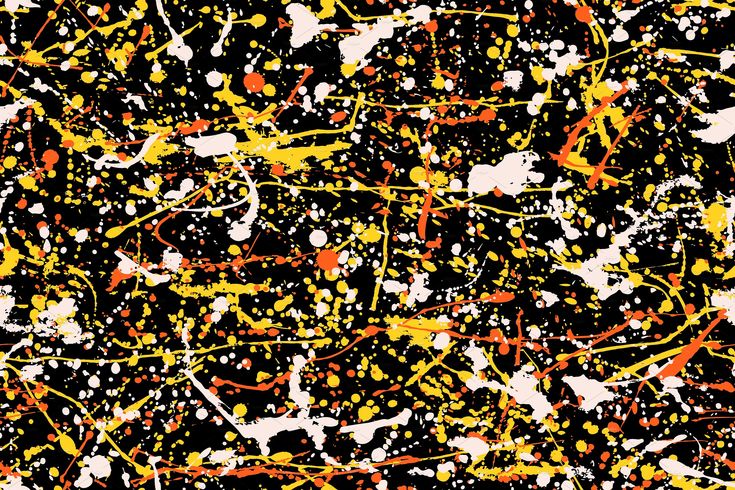
Splattering is an excellent technique for artists seeking a liberating and expressive form of painting. This approach encourages a sense of freedom and spontaneity that can be challenging to achieve with more controlled methods. Splattering is all about embracing the unpredictability of art and enjoying the unrestrained, dynamic nature of the process. To execute this technique, begin by wetting your brush with water, then dip it into an acrylic pigment and flick the brush directly onto the canvas. The resulting splatters create a visually captivating and energetic composition, capturing the essence of movement and the uninhibited spirit of artistic expression. Splattering offers a playful and unstructured approach to painting, allowing artists to break away from convention and discover the unique beauty that emerges from the randomness and vitality of the splatter patterns.
9# Dabbing
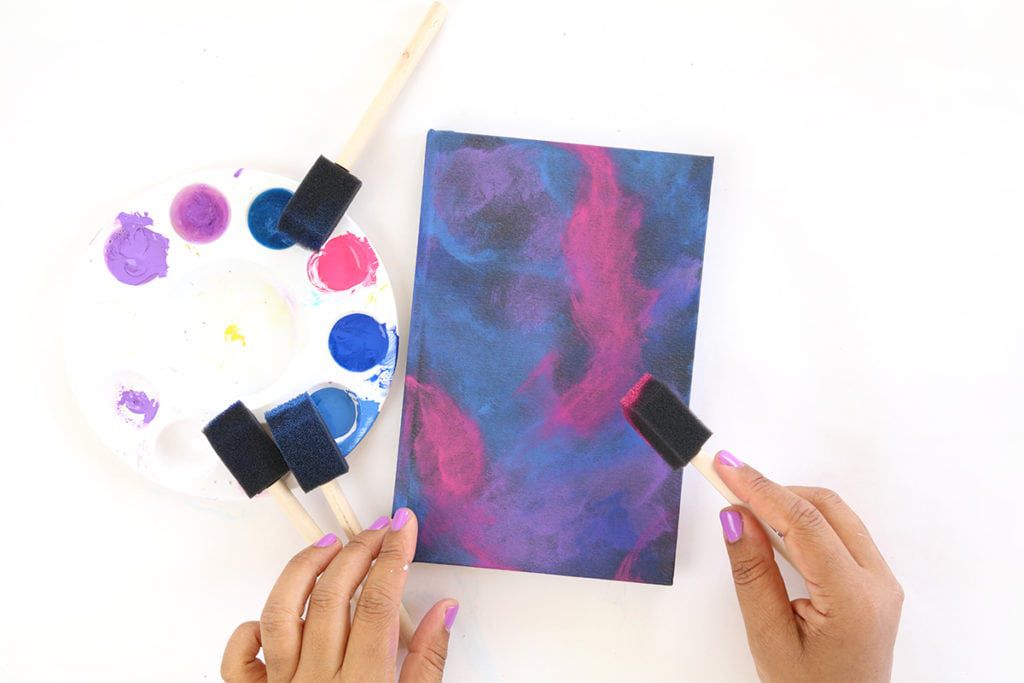
Dabbing is a straightforward painting technique that involves applying paint onto a surface using a stiff bristle brush, paper towel, or sponge. The key is to apply the paint quickly with light pressure. This technique is particularly effective in creating texture and movement within a piece, making it well-suited for portraying treetops, greenery, or any element where a sense of motion is desired. Dabbing allows artists to capture the essence of movement and liveliness in their paintings, and for inspiration, examining examples of Claude Monet’s work can provide valuable insights into the expressive possibilities of this technique.
10# Palette knife
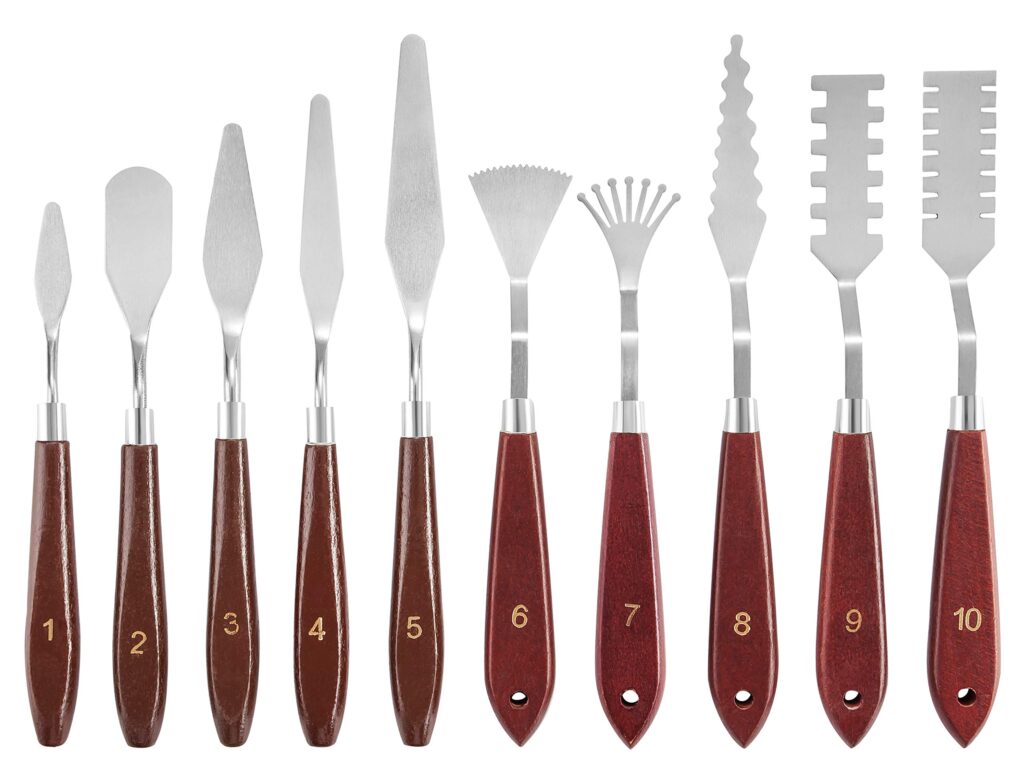
The palette knife, often associated with mixing paint on the palette, serves as a versatile tool that can be employed to achieve unique effects in artwork, challenging to replicate with a brush. Palette knives are especially useful for blending edges, as they allow artists to drag one color into another, creating a rough and textured appearance. Additionally, artists can use a palette knife to introduce small bursts of color into a painting by loading the tip of the knife with paint and gently dabbing it onto the surface. This technique adds a dynamic and expressive element to the artwork, showcasing the palette knife’s ability to create distinct textures and visual interest. Beyond its conventional use, the palette knife emerges as a valuable instrument for artists seeking to experiment with unconventional approaches and enhance the texture and character of their paintings.
Conclusion
The world of painting offers a rich tapestry of techniques that artists can explore to enhance their skills and express their creativity. From traditional methods like underpainting and stippling to more avant-garde approaches like pouring and splattering, each technique provides a unique avenue for artistic expression. Artists can choose from a variety of tools, including brushes, palette knives, and even their own hands, to create diverse textures and visual effects.
Whether inspired by the controlled chaos of splattering, the meticulous precision of stippling, or the dynamic movement of pouring, artists have the opportunity to break free from conventional methods and discover new ways of conveying emotion and narrative through their work. The use of different materials, such as acrylics, oils, and watercolors, adds further versatility to the artist’s palette.
Ultimately, the choice of technique is a deeply personal one, reflecting the artist’s style, preferences, and intentions. As artists delve into the world of painting, they can draw inspiration from the diverse array of techniques employed by both historical and contemporary masters, finding their own voice and pushing the boundaries of artistic expression. Whether adhering to traditional methods or embracing experimental approaches, the world of painting continues to evolve, inviting artists to embark on a journey of self-discovery and innovation.

